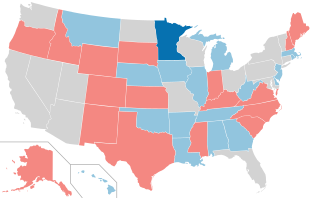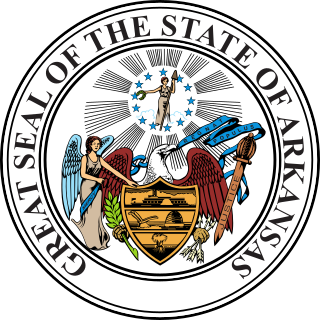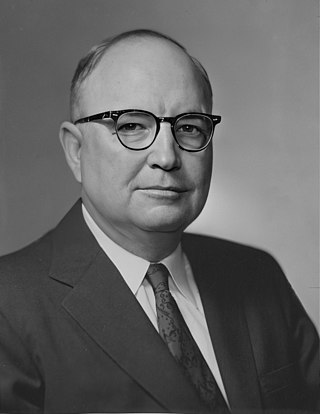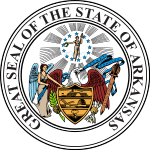
The 1996 United States Senate elections were held on November 5, with the 33 seats of Class 2 contested in regular elections. Special elections were also held to fill vacancies. They coincided with the presidential election of the same year, in which Democrat Bill Clinton was re-elected president.

The 1990 United States Senate elections were held on Tuesday, November 6, 1990, with the 33 seats of Class 2 contested in regular elections. Special elections were also held to fill vacancies. The Democratic Party increased its majority with a net gain of one seat from the Republican Party. The election cycle took place in the middle of President George H. W. Bush's term, and, as with most other midterm elections, the party not holding the presidency gained seats in Congress.

The 1984 United States Senate elections were held on November 6, with the 33 seats of Class 2 contested in regular elections. They coincided with the landslide re-election of President Ronald Reagan in the presidential election. In spite of the lopsided presidential race, Reagan's Republican Party suffered a net loss of two Senate seats to the Democrats, although it retained control of the Senate with a reduced 53–47 majority. Democrats defeated incumbents in Illinois and Iowa, and won an open seat in Tennessee, while Republicans defeated an incumbent in Kentucky.

The 1978 United States Senate elections were held on November 7, in the middle of Democratic President Jimmy Carter's term. The 33 seats of Class 2 were contested in regular elections. Special elections were also held to fill vacancies.

The 1976 United States Senate elections was an election for the United States Senate. Held on November 2, the 33 seats of Class 1 were contested in regular elections. They coincided with Democrat Jimmy Carter's presidential election and the United States Bicentennial celebration. Although almost half of the seats decided in this election changed parties, Carter's narrow victory did not provide coattails for the Democratic Party. Each party flipped seven Senate seats, although, one of the seats flipped by Democrats was previously held by a Conservative.

The 1974 United States Senate elections were held on November 5, with the 34 seats of Class 3 contested in regular elections. They occurred in the wake of the Watergate scandal, Richard M. Nixon's resignation from the presidency, and Gerald Ford's subsequent pardon of Nixon. Economic issues, specifically inflation and stagnation, were also a factor that contributed to Republican losses. As an immediate result of the November 1974 elections, Democrats made a net gain of three seats from the Republicans, as they defeated Republican incumbents in Colorado and Kentucky and picked up open seats in Florida and Vermont, while Republicans won the open seat in Nevada. Following the elections, at the beginning of the 94th U.S. Congress, the Democratic caucus controlled 60 seats, and the Republican caucus controlled 38 seats.

The 1972 United States Senate elections were held on November 7, with the 33 seats of Class 2 contested in regular elections. They coincided with the landslide re-election of Republican President Richard Nixon. Despite Nixon's landslide victory, Democrats increased their majority by two seats. The Democrats picked up open seats in Kentucky and South Dakota, and defeated four incumbent senators: Gordon Allott of Colorado, J. Caleb Boggs of Delaware, Jack Miller of Iowa, and Margaret Chase Smith of Maine. The Republicans picked up open seats in New Mexico, North Carolina, and Oklahoma, and defeated one incumbent, William B. Spong Jr. of Virginia.

The 1970 United States Senate elections was an election for the United States Senate. It took place on November 3, with the 33 seats of Class 1 contested in regular elections. Special elections were also held to fill vacancies. These races occurred in the middle of Richard Nixon's first term as president. The Democrats lost a net of three seats, while the Republicans and the Conservative Party of New York picked up one net seat each, and former Democrat Harry F. Byrd Jr. was re-elected as an independent.

The 1968 United States Senate elections were elections for the United States Senate. Held on November 5, the 34 seats of Class 3 were contested in regular elections. They coincided with the presidential election of the same year. The Republicans picked up five net seats in the Senate. This saw Republicans win a Senate seat in Florida for the first time since Reconstruction.

The 1960 United States Senate elections coincided with the election of John F. Kennedy as president on November 8, 1960. The 33 seats of Class 2 were contested in regular elections. A special election was also held on June 28, 1960, for a mid-term vacancy in North Dakota where Democrats flipped a seat to expand their majority to 66–34. As Majority Leader Lyndon Johnson was elected Vice President, Mike Mansfield became the new majority leader.

Winston Bryant is an American politician and attorney who served as the Secretary of State of Arkansas (1977–1978), the 14th Lieutenant Governor of Arkansas (1981–1991) and Arkansas Attorney General (1991–1999).

The 1996 United States Senate election in Arkansas was held on November 5, 1996. Incumbent Democratic U.S. Senator David Pryor decided to retire. Republican Tim Hutchinson won the open seat, becoming the first Republican to win a U.S. Senate seat in Arkansas since Reconstruction in 1872 and the first to ever be popularly elected in the state. He was the first to win this seat since 1870.

The 2014 United States Senate election in Arkansas was held on November 4, 2014, to elect a member of the United States Senate to represent the state of Arkansas, concurrently with the election of the Governor of Arkansas, as well as other elections to the United States Senate in other states and elections to the United States House of Representatives and various state and local elections.

The 1974 United States Senate election in Arkansas took place on November 5, 1974. Incumbent Democratic U.S. Senator J. William Fulbright ran for re-election to a sixth term in office, but was defeated in the Democratic primary by Governor of Arkansas Dale Bumpers. Bumpers won the general election easily.

The 1978 United States Senate election in Arkansas took place on November 7, 1978. Incumbent U.S. Senator John L. McClellan had died the previous December, leaving the seat vacant. Interim appointee Kaneaster Hodges Jr. did not run to the full seat, and was succeeded by Governor of Arkansas David Pryor.

The 1954 United States Senate election in Arkansas took place on November 2, 1954. Incumbent U.S. Senator John L. McClellan was re-elected to a third term in office, after defeating a primary challenge from former Governor of Arkansas Sid McMath.

The 1966 United States Senate election in Arkansas took place on November 8, 1966. Incumbent U.S. Senator John L. McClellan was re-elected to a fifth term in office.

The 1972 United States Senate election in Colorado took place on November 7, 1972. Incumbent Republican U.S. Senator Gordon Allott ran for re-election to a fourth term, but was narrowly defeated by Democratic former State Representative Floyd Haskell. This would be the last time until 2008 that a Democrat was elected to the Class 2 Senate seat from Colorado. Colorado was one of fifteen states alongside Alabama, Arkansas, Delaware, Georgia, Iowa, Louisiana, Maine, Minnesota, Mississippi, Montana, New Hampshire, Rhode Island, South Dakota and West Virginia that were won by Republican President Richard Nixon in 1972 that elected a Democrat to the United States Senate.

The 1972 United States Senate election in Iowa took place on November 7, 1972. Incumbent Republican U.S. Senator Jack Miller ran for re-election to a third term but was defeated by Democrat Dick Clark. Iowa was one of fifteen states alongside Alabama, Arkansas, Colorado, Delaware, Georgia, Louisiana, Maine, Minnesota, Mississippi, Montana, New Hampshire, Rhode Island, South Dakota and West Virginia that were won by Republican President Richard Nixon in 1972 that elected a Democrat to the United States Senate.

The 1972 United States Senate election in Mississippi was held on November 7, 1972. Incumbent Democratic U.S. Senator James Eastland won re-election to his sixth term. As of 2023, this was the last time that the Democrats won the Class 2 Senate seat in Mississippi. Mississippi was one of fifteen states alongside Alabama, Arkansas, Colorado, Delaware, Georgia, Iowa, Louisiana, Maine, Minnesota, Montana, New Hampshire, Rhode Island, South Dakota and West Virginia that were won by Republican President Richard Nixon in 1972 that elected a Democrat to the United States Senate.






















